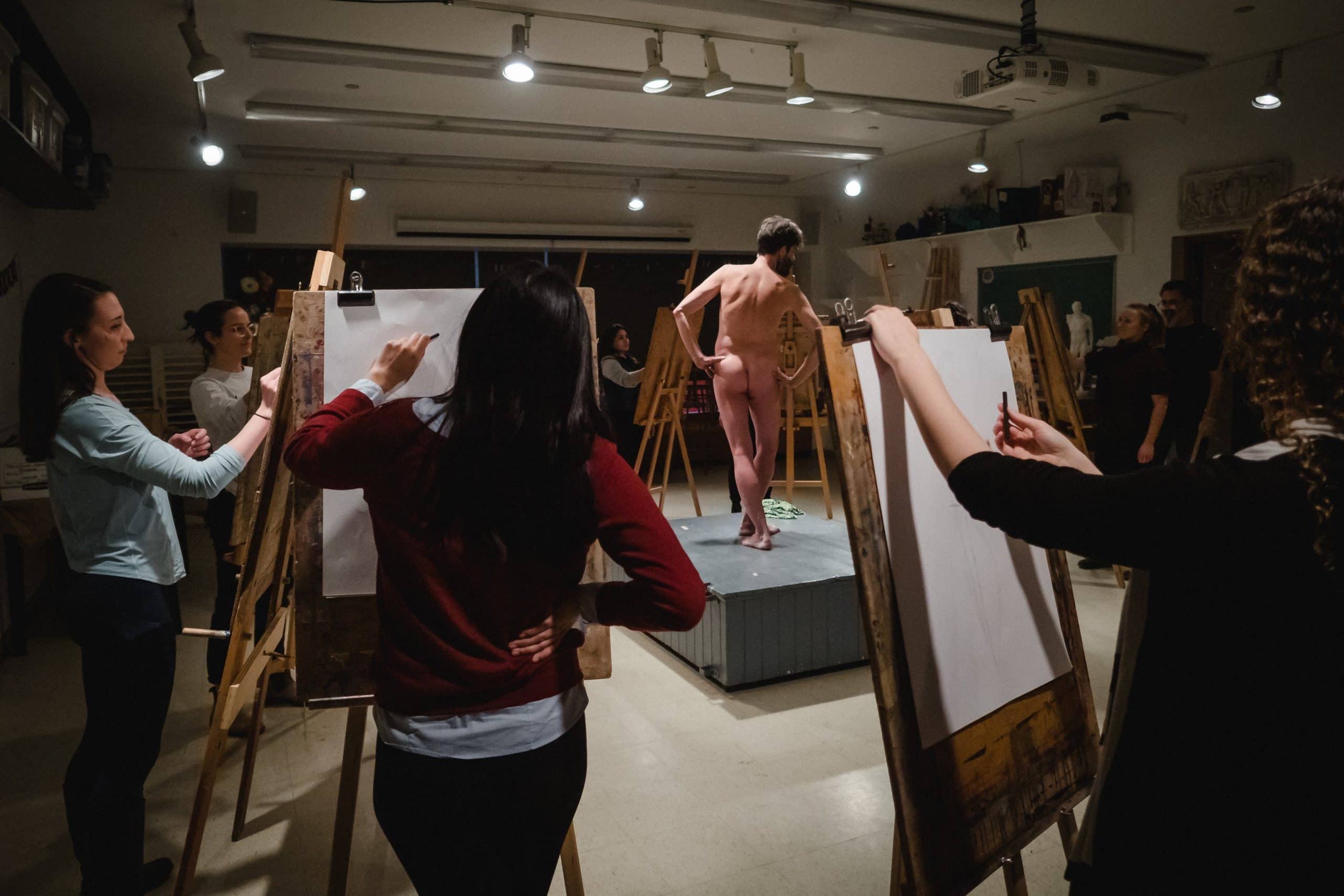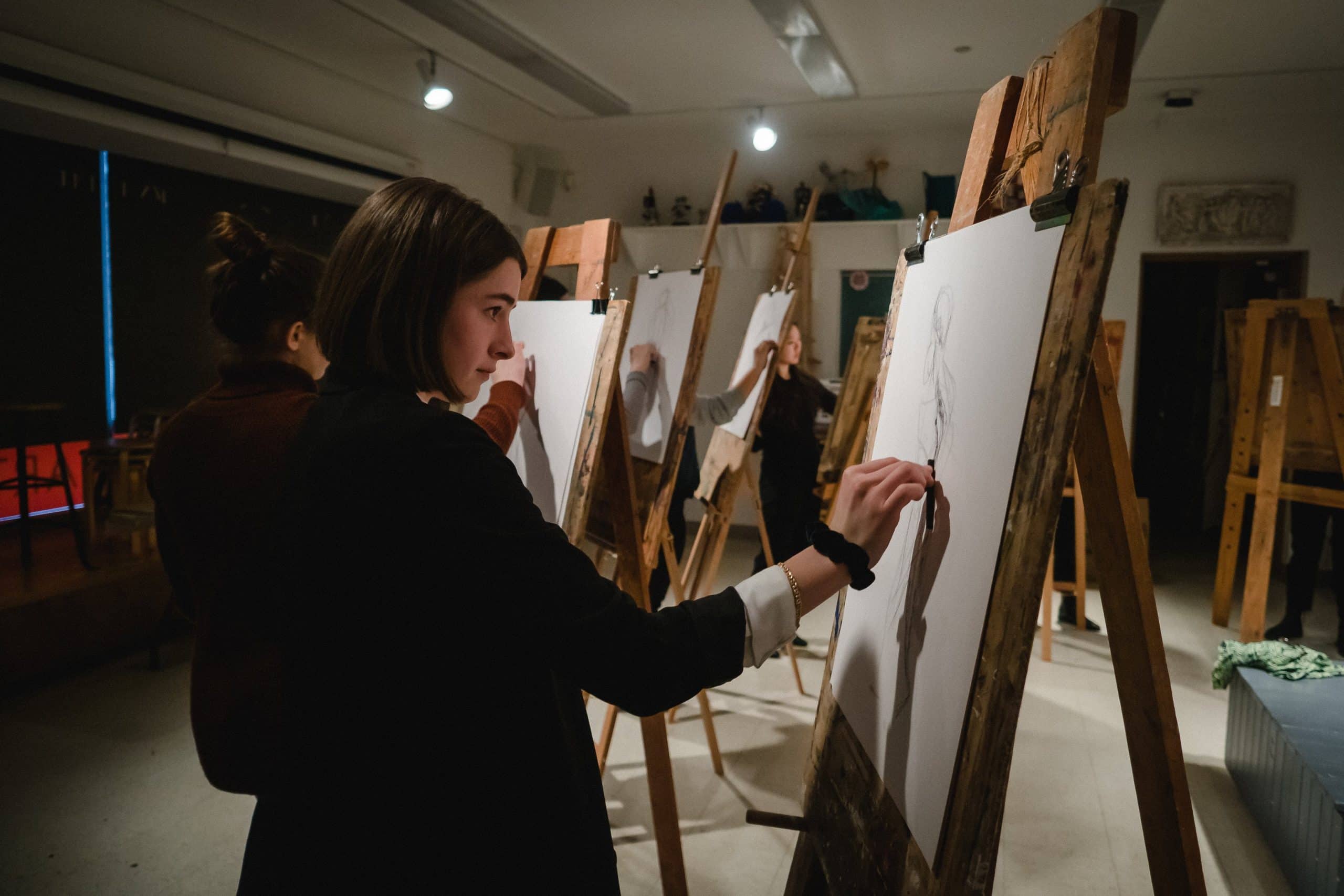A new multi-visit Art and Medicine pilot program developed in collaboration with the School of Medicine at Queen’s University took place in the spring. Formatted as a research study, the interactive program taught first-year medical students visual analysis, communication and critical thinking skills. Each week participants were introduced to a different type of observation training using art from Agnes collections and exhibitions along with studio-based creation. The purpose was to explore and evaluate how different approaches to artobservation training impact clinical observation skills. “Teaching visual analysis skills in an art museum setting allows students the freedom to experiment with new concepts and ideas in a low-risk environment,” says Heather Parker, Associate Curator, Academic Outreach. “It allows them to think critically about their assumptions.”

Artist Daniel Hughes leads a life drawing class in the Studio for first-year medical students.

Clinical observation is a critical component of the doctor-patient interaction. In many cases, clinical decisions are made based on what a physician sees and how they interpret what they see. Despite the importance of visual analysis, it is rare for medical trainees to receive formal teaching on the topic. If and when teaching does occur, medical curricula have often focused on teaching learners what to look for in terms of clinical conditions, rather than how to look or engage in the observation process.
“A large part of medicine often involves rote memorization and pattern recognition. However, diagnosis and management are much more challenging if students don’t know where or how to start looking” says Principal Investigator Dr Christine Law, Department of Ophthalmology. “Our hope is that the Art of Observation program will help bridge the gap from their visual to medical analysis.” Arts-based training enables physicians to use a holistic approach when diagnosing patients. The research on this pilot program will allow the School of Medicine and the Agnes to implement new evidence-based arts programming to students.